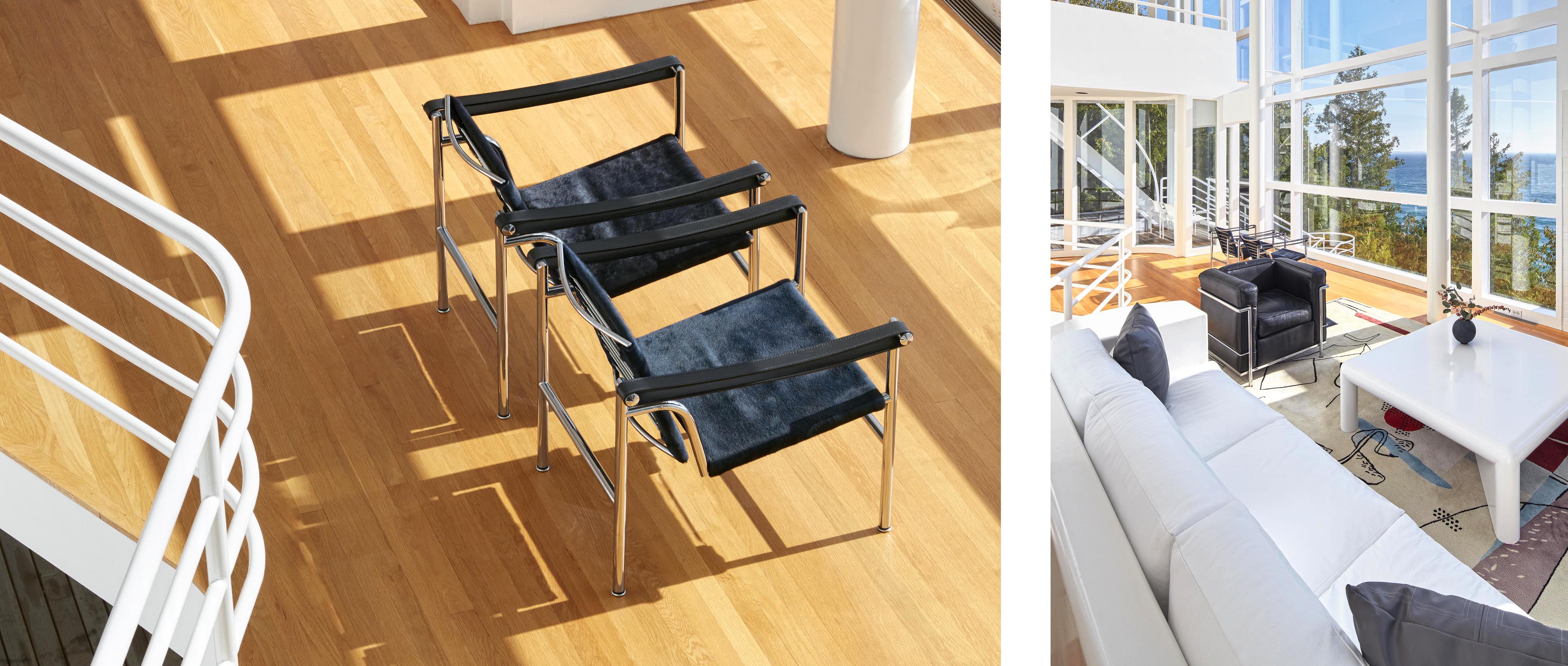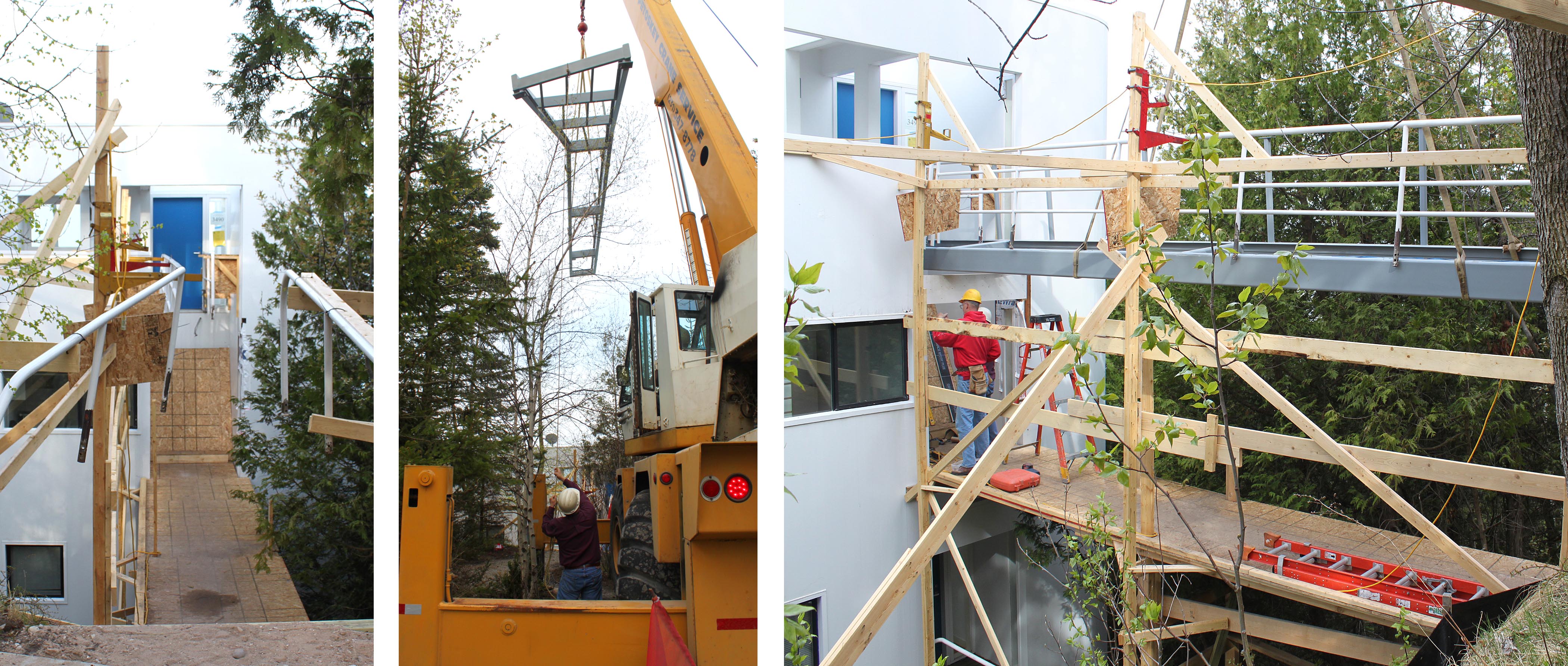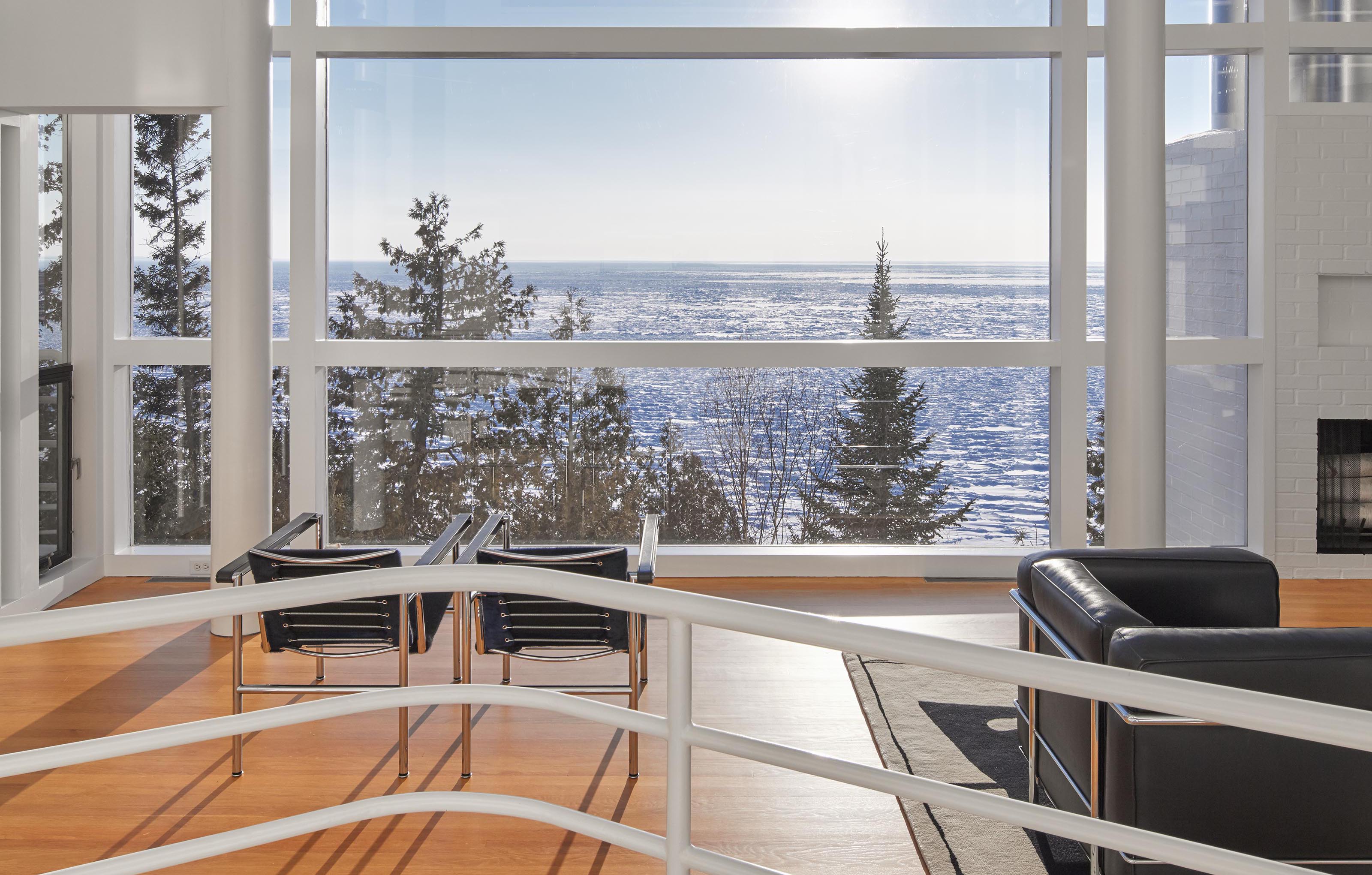Douglas
House
The
Restorations
By 1981, Jim and Jean Douglas had sold their pristine home on Lake Michigan and moved away. A new owner would initiate a series of alterations that deviated wildly from the original design. He carpeted and wallpapered the stairway, painted a bath red, green, and blue, and added Early American furniture.
Closed up during the winters, the home deteriorated swiftly. In 1985, it was sold to Paul Beitler, a Chicago real estate developer, whose reaction to the alterations was succinct: “This guy had no clue what this house was all about.”
Beitler and his wife embarked on an ambitious renovation, furnishing the living area with three of Le Corbusier’s Petit Confort chairs, and then adding his Basculant chairs. They also found and replaced nine Alvar Aalto Artek chairs, and restored the damaged Richard Meier-designed sofa, coffee table, and dining table. Restored, the home would be featured in Architectural Digest in December 1988 with an article penned by Paul Goldberger, the Pulitzer Prize-winning architecture critic.

But by 2007, the home had once again fallen into disrepair. That’s when Michael McCarthy and Marcia Myers, retired executives at Procter & Gamble, purchased it. While it was in rough shape, the potential in its design was obviously worth a great deal. “It took a year to assess it all, and in the summer of 2008 we started working on it,” Myers says.
Unaware of the home’s status as one of Meier’s best until after they’d bought it, the couple embarked on a heroic, top-to-bottom restoration – one that continues to this day. “There was moisture damage wherever water had gotten in,” says McCarthy, an engineer by profession. “The HVAC system was antiquated, the bridge was falling down, and the cantilevered steel had to be replaced.”

The couple made steady progress to bring Meier’s design back to its original standards – with updated technologies wherever possible. Thanks to new heating and air conditioning systems, energy bills have been slashed by 55 to 60 percent. Steel-framed windows were removed, sand-blasted, repainted, and restored with laminated, energy-efficient, low-iron glazing.
With his floor-to-ceiling windows overlooking the lake, Meier obviously wanted to make an architectural statement, regardless of heat gain. Today, that’s not an issue. “People ask: ‘What about the lake and the afternoon sun?’” Myers says. “But with the air conditioning in the summertime, the whole front of the house is very comfortable.”
Their renovation has been a labor of love – albeit an expensive one. “In 12 years, we’ve put in more money than the purchase price,” McCarthy says.
And the results are impeccable.
